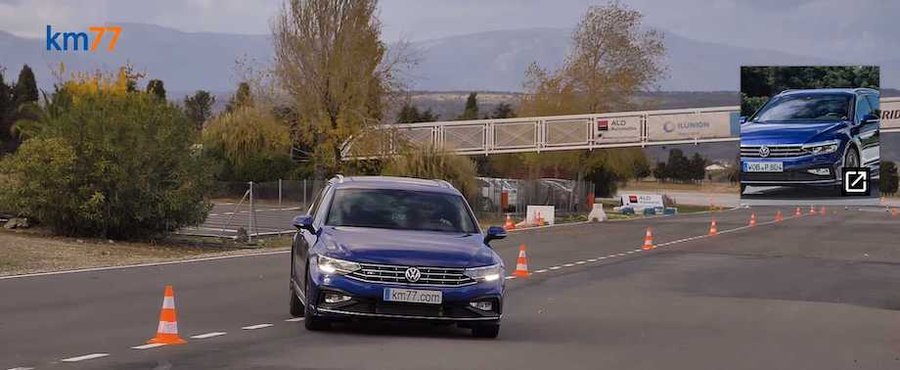See Euro-Spec VW Passat Variant Spectacularly Fail Moose Test

The moose test. It's a crazy-cool name for a crazy-important look at how vehicles react to emergency maneuvers. There are several ways in which automakers and independent companies gauge real-world vehicle dynamics, but the moose test – so named due to its Scandinavian origins where encountering a moose in the road isn't uncommon – is arguably among the most critical. It simulates an emergency swerve to miss an object, followed by another emergency swerve to avoid oncoming traffic. And well, the Euro-spec Volkswagen Passat wagon didn't do so well.
The test video comes from km77.com on YouTube, which tested the 2019 VW Passat Variant. It's a decidedly sporty long roof that's forbidden fruit in North America, and for this video, the car in question packs a 2.0-liter engine developing 188 horsepower (140 kilowatts). The driver enters the test at a speed of 77 km/h (48 mph) and according to the video, he had no idea how the car would respond. The tail swings out quite dramatically on the second swerve, so much so that the driver struggles to recover and actually hits a cone on the opposite side of the track.
Reducing the speed to 73 km/h (45 mph) the VW and the driver were able to successfully complete the hard lane-change without hitting cones. It wasn't smooth sailing, however, as the Passat's tail still wagged emphatically and the driver was clearly prepared for wayward action. To be fair, this is the speed where most cars struggle in the moose test, but the VeeDub's strong tendency for oversteer is certainly more dramatic than what we usually see. And as far as we know, this wagon had stability control engaged as well.
If there's any good news here, it's that the Passat Variant seems to have some driving characteristics that enthusiasts might enjoy. Snapping the tail out for a Scandanivan Flick looks quite easy, and it actually maintained its composure very well in a standard slalom test. But for average drivers suddenly faced with an emergency situation, the long roof Passat could be quite a handful.
